Question
(a) Define the term excretion.

(b) Name two human excretory organs.
Identify two substances that each organ excretes.
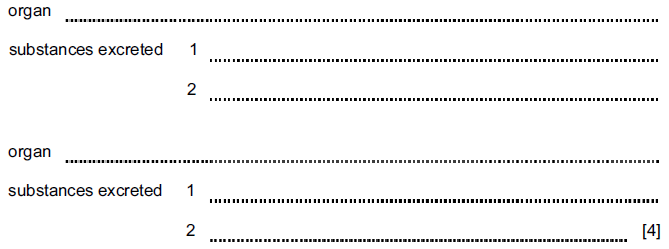
(c) Green plants are living organisms and excrete substances.
Suggest one substance that plants excrete.
![]()
▶️Answer/Explanation
Ans:
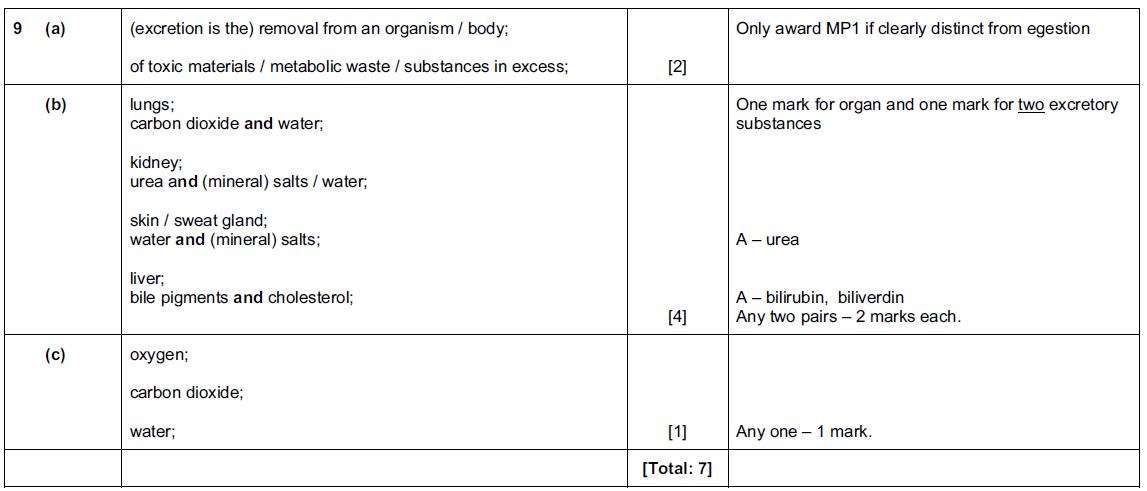
Question
Kidneys are important for excretion.
(a) Explain the purpose of excretion.
…………………………………………………………………………………………………………………………………
…………………………………………………………………………………………………………………………………
…………………………………………………………………………………………………………………………… [2]
(b) Sketch a simple diagram of a human kidney and its ureter.
Label the cortex, medulla and ureter on your diagram.
[2]
(c) Fig. 3.1 is a photomicrograph of a glomerulus in a kidney.
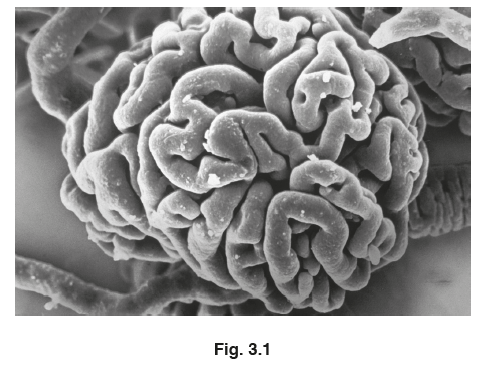
(i) Describe the structure of a glomerulus.
You may refer to Fig. 3.1 in your answer.
………………………………………………………………………………………………………………………….
………………………………………………………………………………………………………………………….
………………………………………………………………………………………………………………………….
………………………………………………………………………………………………………………………….
……………………………………………………………………………………………………………………. [2]
(ii) Describe the role of the glomerulus.
………………………………………………………………………………………………………………………….
………………………………………………………………………………………………………………………….
………………………………………………………………………………………………………………………….
………………………………………………………………………………………………………………………….
……………………………………………………………………………………………………………………. [2]
(d) Table 3.1 shows some comparisons between a human and a mouse.
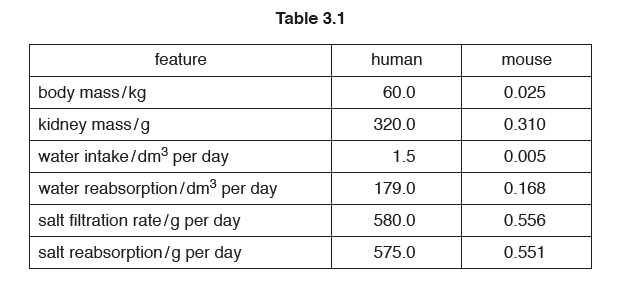
(i) Table 3.1 shows that salts are reabsorbed in the kidneys of both humans and mice.
Describe how salts are reabsorbed against a concentration gradient.
………………………………………………………………………………………………………………………….
………………………………………………………………………………………………………………………….
………………………………………………………………………………………………………………………….
………………………………………………………………………………………………………………………….
………………………………………………………………………………………………………………………….
………………………………………………………………………………………………………………………….
………………………………………………………………………………………………………………………….
………………………………………………………………………………………………………………………….
……………………………………………………………………………………………………………………. [4]
(ii) Scientists stated a hypothesis:
“humans and mice reabsorb salt at almost the same rate in relation to the size of
their kidneys”
Determine whether the data in Table 3.1 supports this hypothesis.
Show your working.
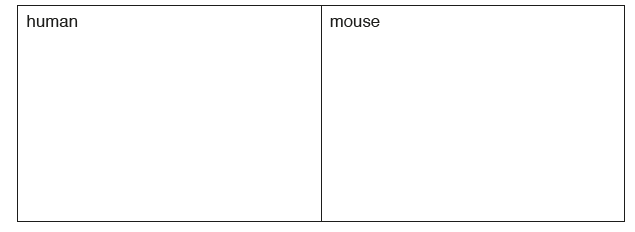
………………………………………………………………………………………………………………………….
………………………………………………………………………………………………………………………….
……………………………………………………………………………………………………………………. [4]
(iii) Table 3.1 also shows that water is reabsorbed in the kidneys of both humans and mice.
State the name of the process that mammals use to reabsorb water.
……………………………………………………………………………………………………………………. [1]
(iv) Water and salt are reabsorbed in the kidneys.
State the name of one other molecule that is also reabsorbed in kidney tubules.
……………………………………………………………………………………………………………………. [1]
Answer/Explanation
Ans:
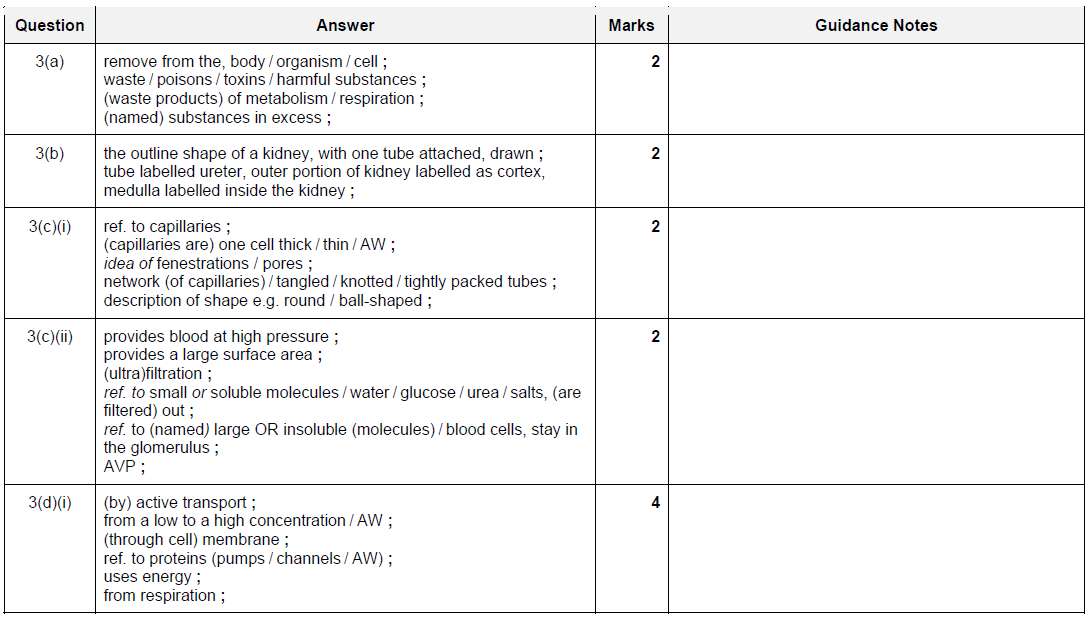

Question
The kidney is one of the main excretory organs of the body.
(a) Define the term excretion.
…………………………………………………………………………………………………………………………………
…………………………………………………………………………………………………………………………………
…………………………………………………………………………………………………………………………………
…………………………………………………………………………………………………………………………………
…………………………………………………………………………………………………………………………… [3]
(b) One of the roles of the kidney is to filter the blood.
Fig. 1.1 shows a section of a kidney.
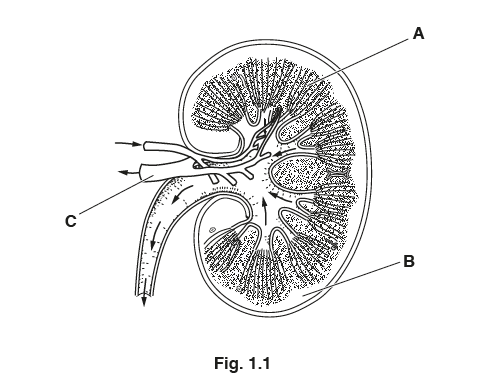
State the name of the parts labelled A, B and C on Fig. 1.1.
A ……………………………………………………………………………………………………………………………..
B ……………………………………………………………………………………………………………………………..
C ……………………………………………………………………………………………………………………………..
[3]
(c) Table 1.1 shows the concentrations of four solutes:
• in the blood in the renal artery
• in the fluid in the kidney tubule
• in the urine.
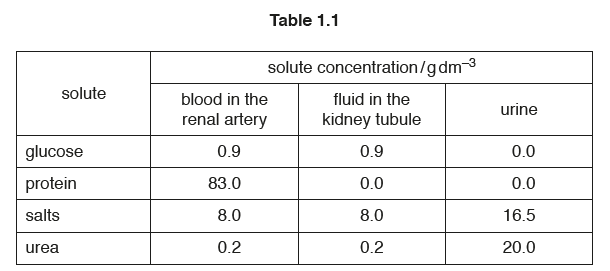
(i) Calculate the percentage increase in the concentration of urea between the blood in the
renal artery and the urine.
Show your working.
…………………………………………………… %
[2]
(ii) Describe the results for the concentration of salts shown in Table 1.1.
………………………………………………………………………………………………………………………….
………………………………………………………………………………………………………………………….
………………………………………………………………………………………………………………………….
………………………………………………………………………………………………………………………….
……………………………………………………………………………………………………………………. [2]
(iii) State the reason for the difference in the concentration of protein between the blood in
the renal artery and the fluid in the kidney tubule.
………………………………………………………………………………………………………………………….
……………………………………………………………………………………………………………………. [1]
(iv) State the reason for the difference in the concentration of glucose between the fluid in
the kidney tubule and the urine.
………………………………………………………………………………………………………………………….
……………………………………………………………………………………………………………………. [1]
(d) Dialysis is a treatment used for people with kidney failure.
Some people with kidney failure are given a kidney transplant.
State the advantages of having a kidney transplant instead of dialysis.
…………………………………………………………………………………………………………………………………
…………………………………………………………………………………………………………………………………
…………………………………………………………………………………………………………………………………
…………………………………………………………………………………………………………………………………
…………………………………………………………………………………………………………………………………
…………………………………………………………………………………………………………………………………
…………………………………………………………………………………………………………………………… [3]
Answer/Explanation
Ans:
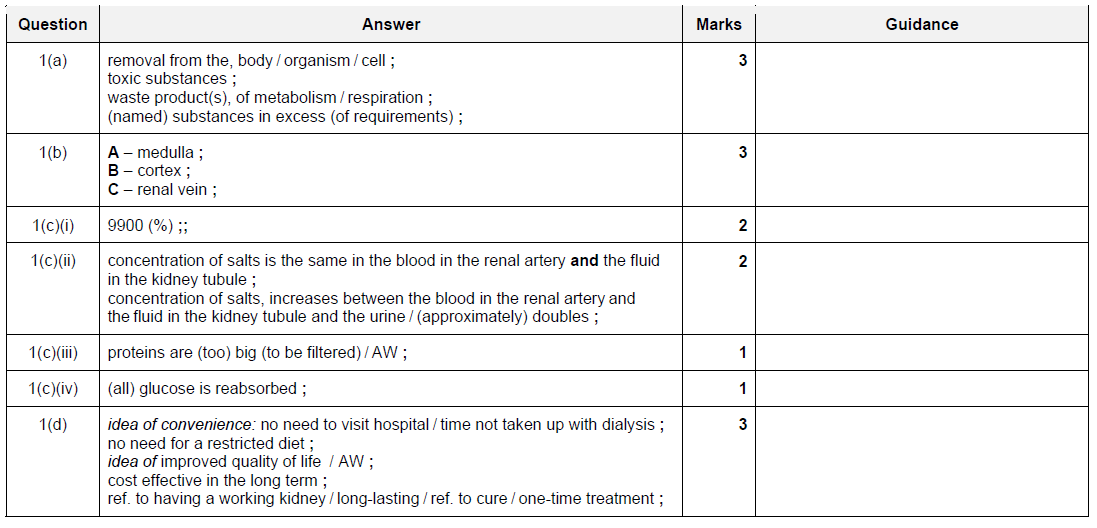
Question
Fig. 6.1 shows a human kidney and the ureter attached to it.

(a) Two other tubes are attached to the kidney, but are not shown on Fig. 6.1.
Name these two tubes.
(b) Kidneys excrete urea.
State one other substance that is excreted by the kidneys.
(c) (i) State where urea is formed.
(ii) Explain why urea has to be produced.
(iii) State how urea travels to the kidney.
Answer/Explanation
Ans:
(a) renal artery ;
renal vein ;
(b) (excess) water ;
(named) ions / salts ;
hormones ;
vitamins ;
(c) (i) liver ;
(ii) too many /excess, amino acids / protein ;
idea of: inability to store/removal of (excess, amino acids or protein)/AW ;
need to be broken down ;
(iii) in plasma / blood ;
